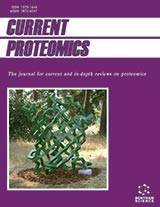Abstract
Background: In sequencing human and model organism DNA, the development of efficient computational techniques for the rapid prediction of short exons in eukaryotes is a major challenge.
Objective: This paper presents a multiscale products-based method in B-spline wavelet domain for short exon detection. In our analysis, we find out the wavelet coefficients associated to introns are less correlated between consecutive scales than coefficients related to exons. We reveal the explanation of this investigation which results from the HMR195 dataset by calculating the histogram distributions of the exon and intron coefficients. We employ these inter-scale correlation features to enhance exon structures and weak background noise.
Method: The development of our method is outlined at two stages: (i) A new B-spline wavelet transform is designed to extract the exon features in multiscale domain; so, setting the window length parameter which affects the results is avoided, and this wavelet has higher degree of freedom for curve design. (ii) Based on the significant difference of correlated features between the exon and intron coefficients, we present a multiscale products-based method to discriminate significant exon features from introns.
Results: The BG570 and HMR195 datasets have been used in the evaluation of considered methods. By comparison with eight other existing techniques, the detection results show that: the proposed method reveals at least improvement of 26.8%, 9.5%, 8.2%, 3.5%, 10.2%, 4.5%, 7.8% and 6.4% on the exons length of 0-24, 25-49, 50-74, 100-124, 125-149, 150-174, 175-199 and 200-299, respectively.
Conclusion: Experimental results demonstrate that our approach leads to better performance for short exon detection.
Keywords: Bioinformatics, short exon detection, B-spline wavelet transform, inter-scale correlation, multiscale products.
Graphical Abstract
Current Bioinformatics
Title:Multiscale Products in B-spline Wavelet Domain: A New Method for Short Exon Detection
Volume: 13 Issue: 5
Author(s): Xiaolei Zhang, Guishan Zhang, Yangjiang Yu, Guocheng Pan, Haitao Deng, Xinbao Shi, Yue Jiao, Renhua Wu*Yaowen Chen*
Affiliation:
- Department of Radiology, Second Affiliated Hospital of Shantou University Medical College, Shantou, Guangdong,China
- Key Lab of Digital Signal and Image Processing of Guangdong, Shantou University, Shantou, Guangdong,China
Keywords: Bioinformatics, short exon detection, B-spline wavelet transform, inter-scale correlation, multiscale products.
Abstract: Background: In sequencing human and model organism DNA, the development of efficient computational techniques for the rapid prediction of short exons in eukaryotes is a major challenge.
Objective: This paper presents a multiscale products-based method in B-spline wavelet domain for short exon detection. In our analysis, we find out the wavelet coefficients associated to introns are less correlated between consecutive scales than coefficients related to exons. We reveal the explanation of this investigation which results from the HMR195 dataset by calculating the histogram distributions of the exon and intron coefficients. We employ these inter-scale correlation features to enhance exon structures and weak background noise.
Method: The development of our method is outlined at two stages: (i) A new B-spline wavelet transform is designed to extract the exon features in multiscale domain; so, setting the window length parameter which affects the results is avoided, and this wavelet has higher degree of freedom for curve design. (ii) Based on the significant difference of correlated features between the exon and intron coefficients, we present a multiscale products-based method to discriminate significant exon features from introns.
Results: The BG570 and HMR195 datasets have been used in the evaluation of considered methods. By comparison with eight other existing techniques, the detection results show that: the proposed method reveals at least improvement of 26.8%, 9.5%, 8.2%, 3.5%, 10.2%, 4.5%, 7.8% and 6.4% on the exons length of 0-24, 25-49, 50-74, 100-124, 125-149, 150-174, 175-199 and 200-299, respectively.
Conclusion: Experimental results demonstrate that our approach leads to better performance for short exon detection.
Export Options
About this article
Cite this article as:
Zhang Xiaolei, Zhang Guishan, Yu Yangjiang, Pan Guocheng, Deng Haitao, Shi Xinbao, Jiao Yue, Wu Renhua*, Chen Yaowen*, Multiscale Products in B-spline Wavelet Domain: A New Method for Short Exon Detection, Current Bioinformatics 2018; 13 (5) . https://dx.doi.org/10.2174/1574893612666170725121058
| DOI https://dx.doi.org/10.2174/1574893612666170725121058 |
Print ISSN 1574-8936 |
| Publisher Name Bentham Science Publisher |
Online ISSN 2212-392X |
 14
14 3
3 1
1 1
1
- Author Guidelines
- Bentham Author Support Services (BASS)
- Graphical Abstracts
- Fabricating and Stating False Information
- Research Misconduct
- Post Publication Discussions and Corrections
- Publishing Ethics and Rectitude
- Increase Visibility of Your Article
- Archiving Policies
- Peer Review Workflow
- Order Your Article Before Print
- Promote Your Article
- Manuscript Transfer Facility
- Editorial Policies
- Allegations from Whistleblowers
Related Articles
-
Isoflavones, their Glycosides and Glycoconjugates. Synthesis and Biological Activity
Current Organic Chemistry V-ATPase Subunit Interactions: The Long Road to Therapeutic Targeting
Current Protein & Peptide Science The Place of Somatostatin Analogs in the Diagnosis and Treatment of the Neuoroendocrine Glands Tumors
Recent Patents on Anti-Cancer Drug Discovery A Systemic Approach to Cancer Treatment: Tumor Cell Reprogramming Focused on Endocrine-Related Cancers
Current Medicinal Chemistry Organoselenium Compounds in Cancer Chemoprevention
Mini-Reviews in Medicinal Chemistry Reversing Agents for ATP-Binding Cassette (ABC) Transporters: Application in Modulating Multidrug Resistance (MDR)
Current Medicinal Chemistry - Anti-Cancer Agents Calix[n]arenes as Goldmines for the Development of Chemical Entities of Pharmaceutical Interest
Current Pharmaceutical Design Chemopreventive Properties of Peptide Lunasin: A Review
Protein & Peptide Letters Inhibition of Renal Alkaline Phosphatase by Cimetidine
Drug Metabolism Letters Safety and Proof-of-Concept Efficacy of Inhaled Drug Loaded Nano- and Immunonanoparticles in a c-Raf Transgenic Lung Cancer Model
Current Cancer Drug Targets Natural Compounds A Weapon to Ameliorate Breast Cancer Cells: A Review
Anti-Cancer Agents in Medicinal Chemistry Chymase Inhibitor As a Novel Therapeutic Strategy for Anti-Vascular Remodeling
Vascular Disease Prevention (Discontinued) A Role for Milk Proteins and their Peptides in Cancer Prevention
Current Pharmaceutical Design Current Status Of Short Synthetic Peptides As Vaccines
Medicinal Chemistry Phosphotyrosine Phosphatases in Cancer Diagnostic and Treatment
Recent Patents on DNA & Gene Sequences Prediction of Biological Activity Spectra for Substances: Evaluation on the Diverse Sets of Drug-Like Structures
Current Medicinal Chemistry 12-Lipoxygenase: A Potential Target for Novel Anti-Platelet Therapeutics
Cardiovascular & Hematological Agents in Medicinal Chemistry Preparation, characterization and <i>in vitro</i> release of zein-pectin capsules for target delivery
Current Drug Delivery Nanotechnology Versus other Techniques in Improving Drug Dissolution
Current Pharmaceutical Design Cell Responses to Oxidative Stressors
Current Pharmaceutical Design


















.jpeg)








